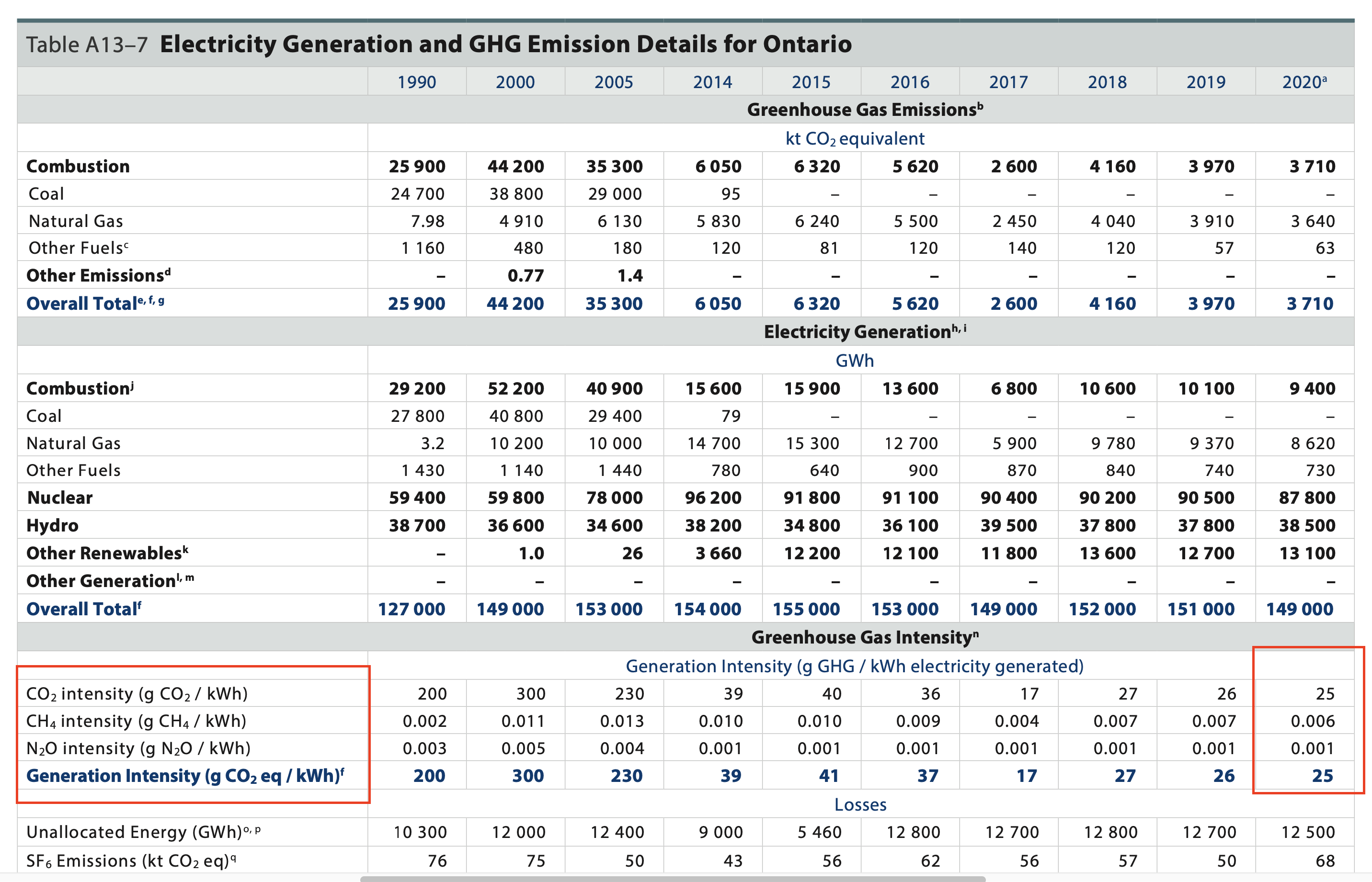Managed Emission Factors - Canadian National Inventory
Canada's official national greenhouse gas inventory is prepared and submitted annually to the United Nations Framework Convention on Climate Change (UNFCCC) by April 15 of each year, in accordance with the Guidelines. Envizi uses this submission as the source for provincial electricity factors in Canada. It also includes information on fossil fuels which is used for select data types. This factor set applies to Canada only.
Envizi has managed this factor set since 2014. The submission to the UNFCCC has been published consistently dating back to 2004. The factor set contains the breakdown of CO2, CH4 and N2O as well as the total CO2e for data type. Please note that because of rounding in the source document there are instances where the combined sum of the CO2, CH4 and N2O emissions do not equal the total CO2e factor recorded for the period (the sum of the factors provided for the 3 gases may be slightly higher or lower, but the total CO2e value applied to your emissions comes directly from the source document so is considered the correct factor).
Website | |
Upcoming publication date | Publishes annually usually in April but sometimes there are delays (2023 was not published until July). Upcoming publication date: April-2024 |
Geographical coverage | Factors are applied to the various provinces of Canada or to the country of Canada. |
Data type coverage | Publications exist from 2004 to the present. Coverage is primarily for electricity information but natural gas and propane values have also been sourced from the publications. Scope 1: fossil fuels (natural gas and propane) Scope 2: Provincial Electricity (Note that Envizi uses the latest year in each publication which is classified as preliminary data. We do not revise that value if it changes in subsequent publications to avoid recalculating data). Scope 3: fossil fuels (natural gas and propane) Note that Envizi calculates transmission and line losses and these are visible in the Emissions Performance Dashboard and categorized as ‘lifecycle emissions’ in the grid. Lifecycle emissions can also be extracted using the Monthly Data Summary Report. |
Effective and Published dates | The factor effective periods for the electricity information have been set to calendar year aligning with the year of the data provided, while the published dates align with publication window of each year submission which is April - March of the next year. For the fossil fuels the effective and publication periods have been set to the same publication window of each year submission which is April - March of the next year. For more information on effective and published dates see this article. If you require a custom period for your factors this will need to be managed as custom factors. |

